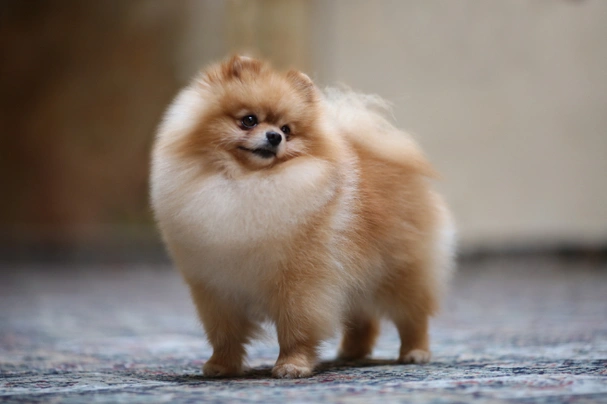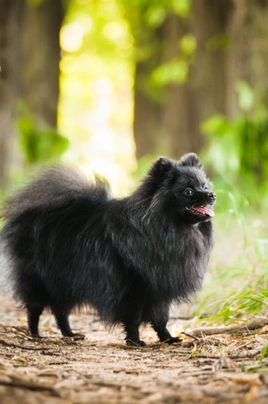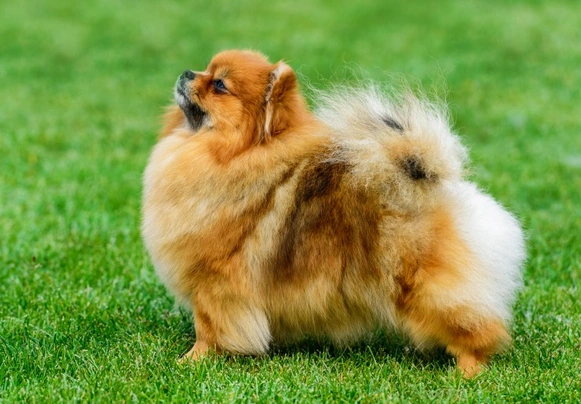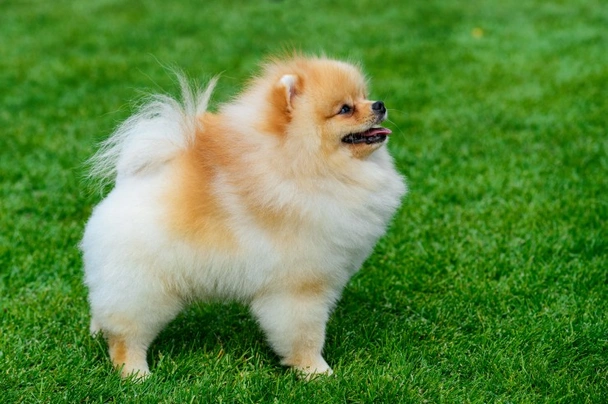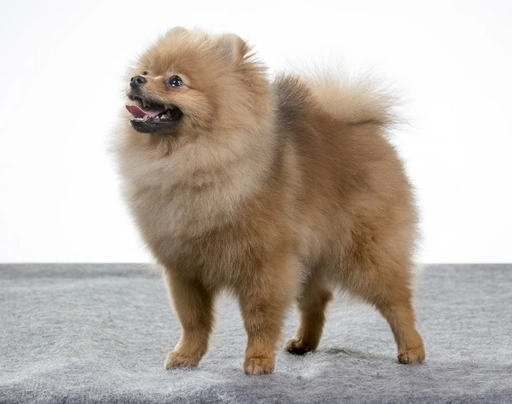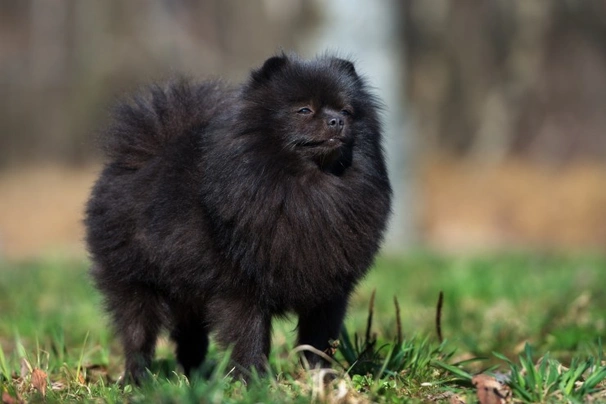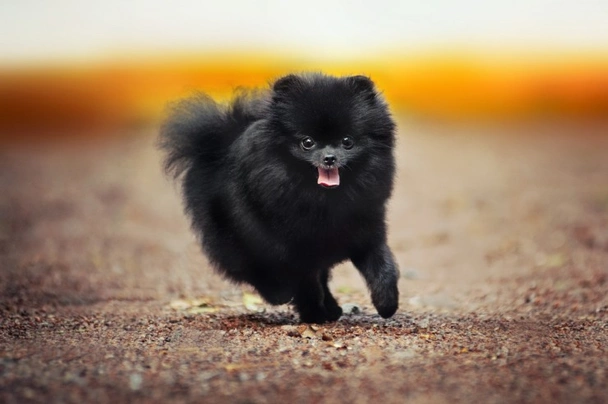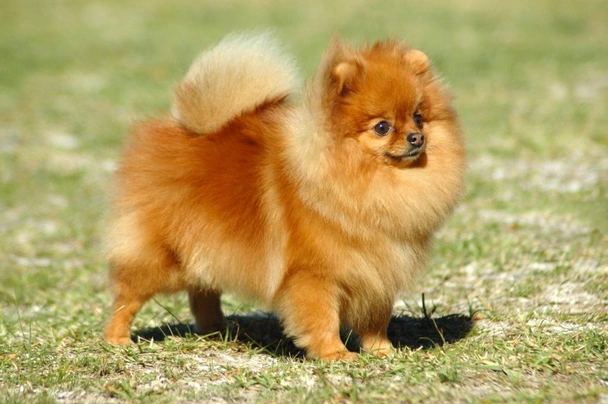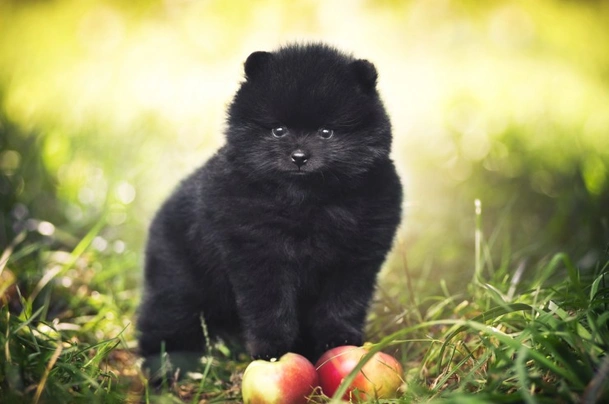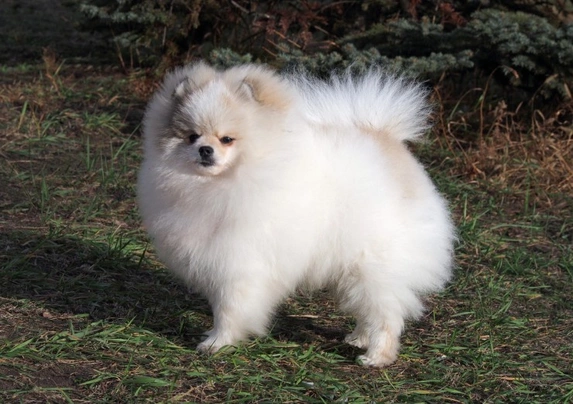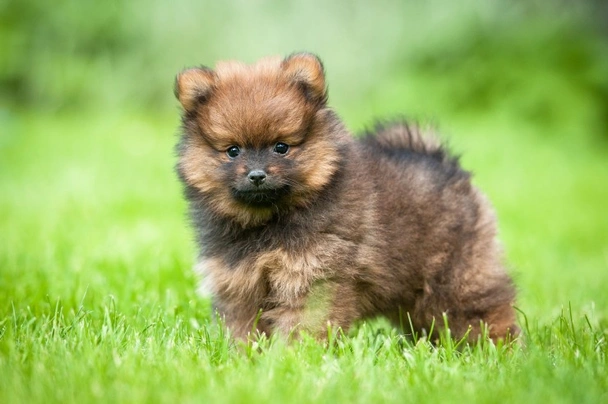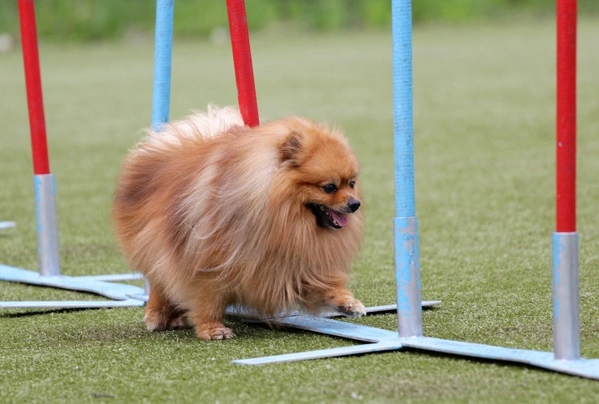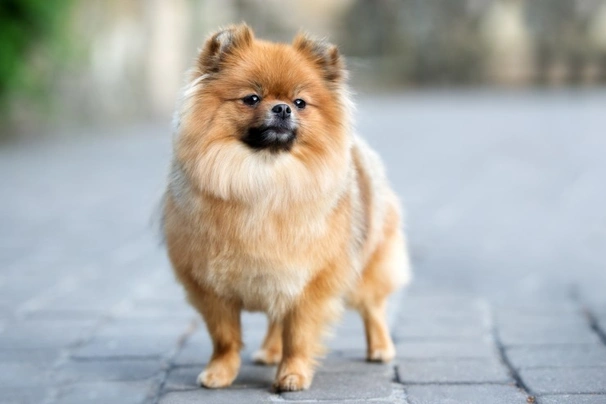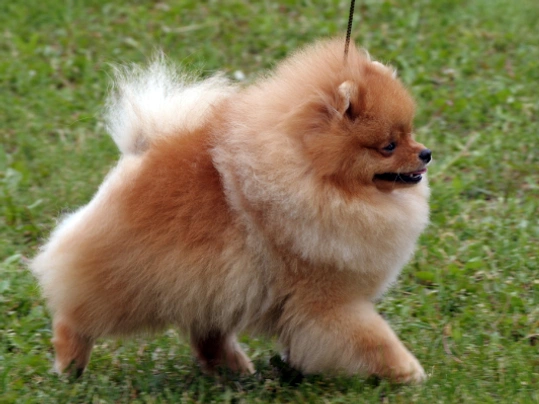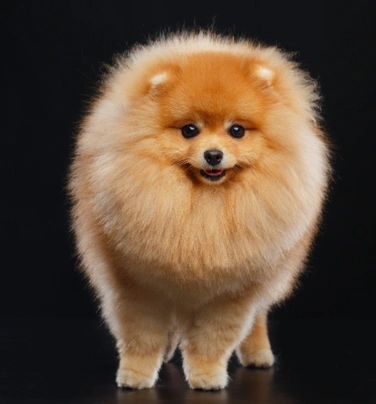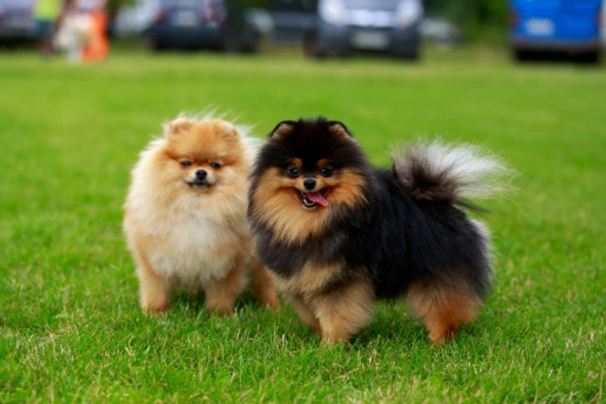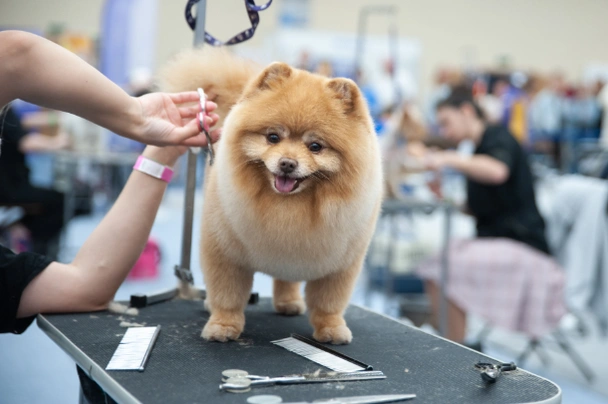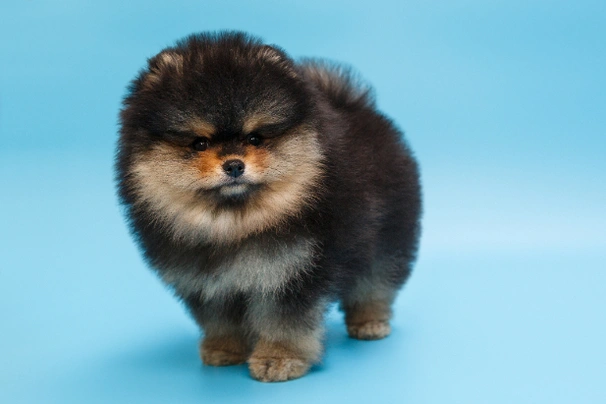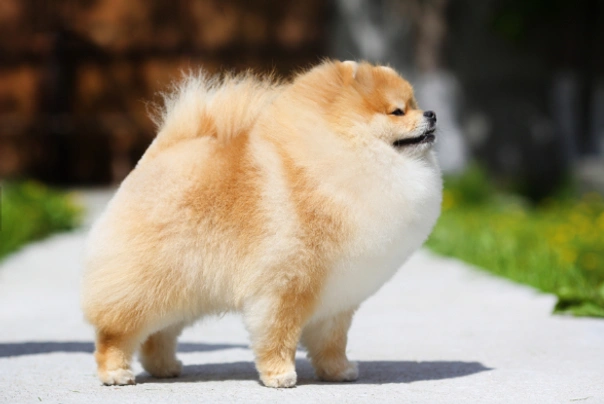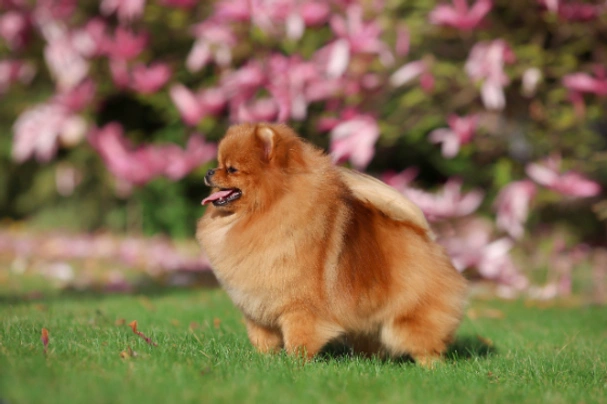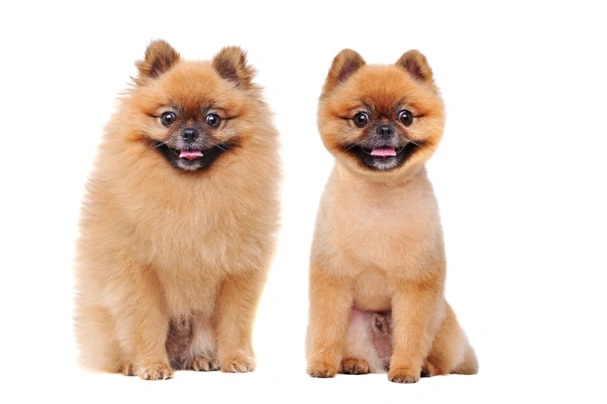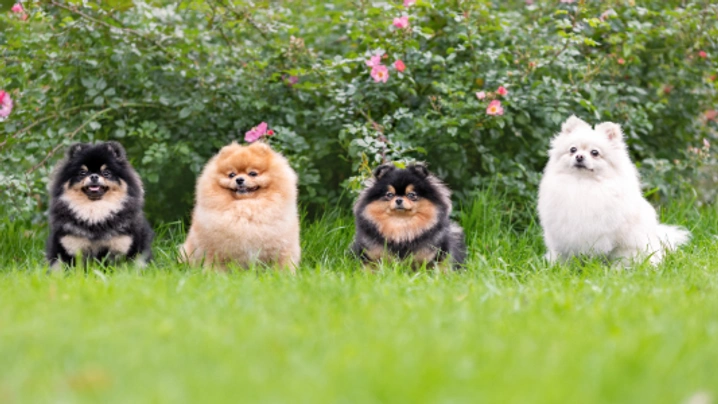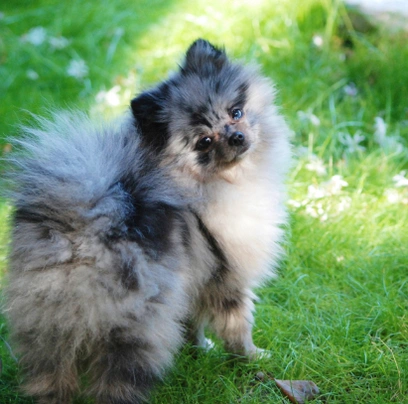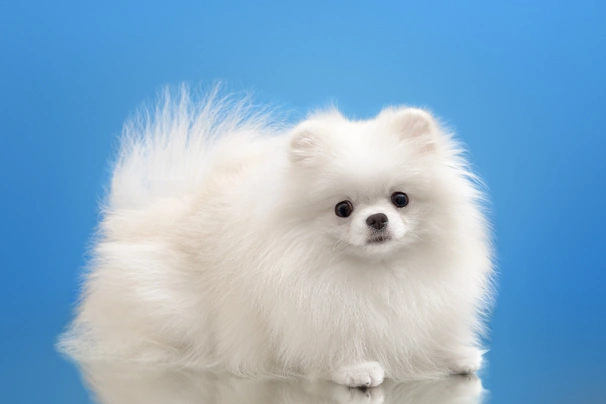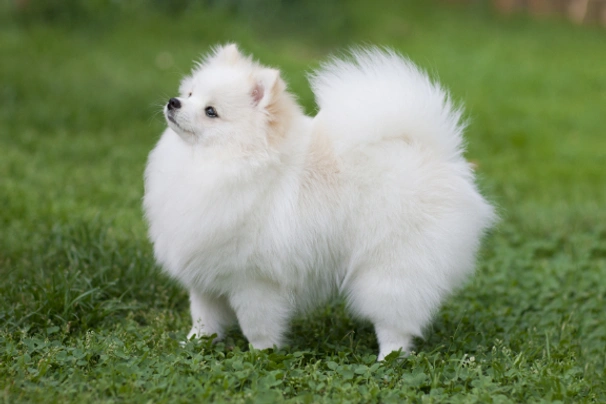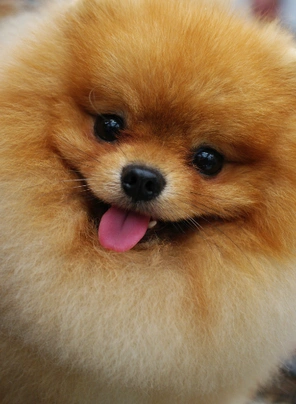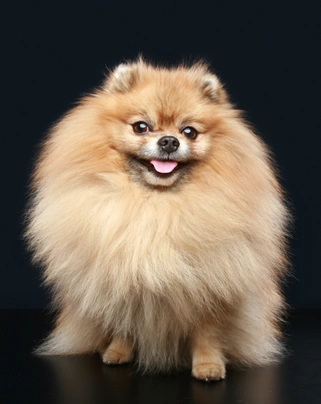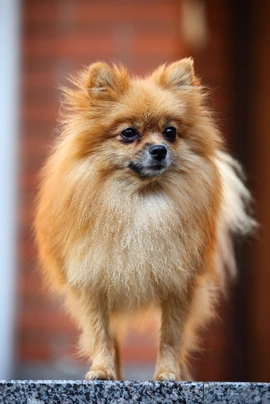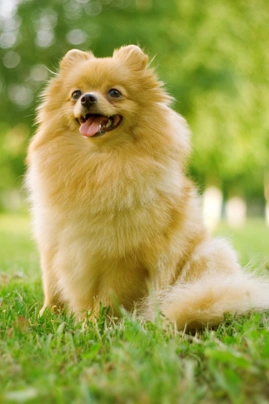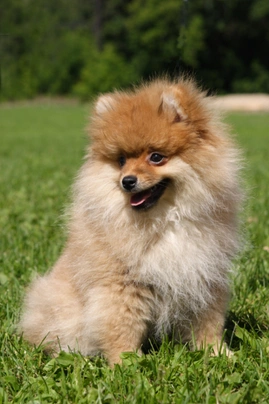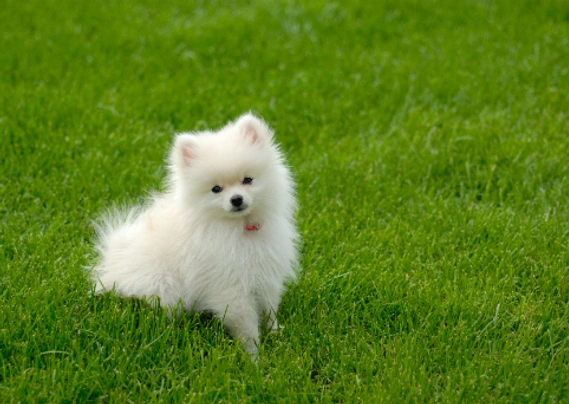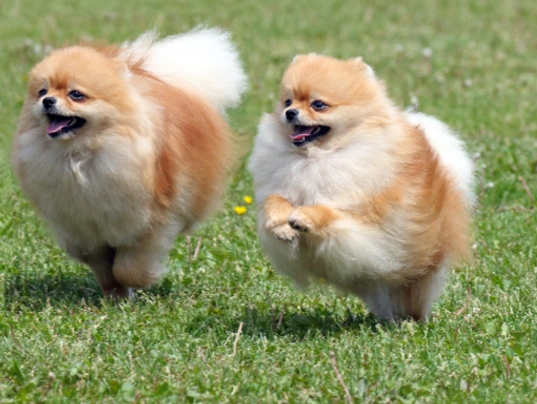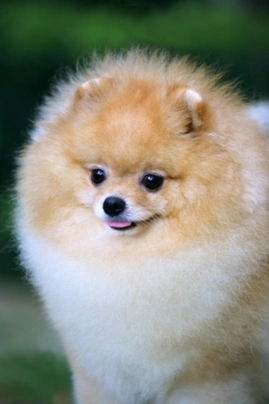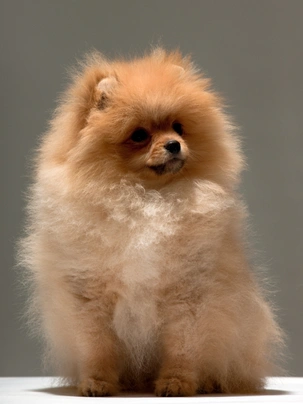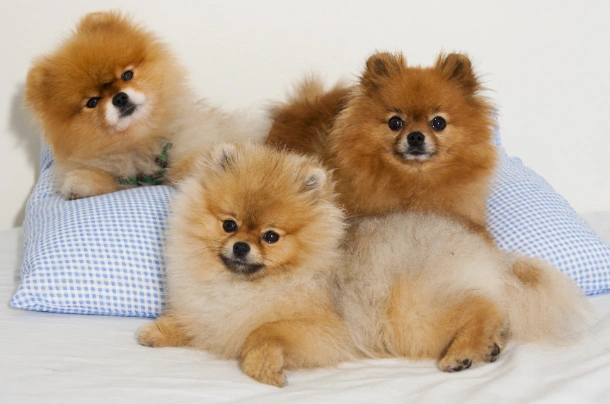Pomeranian
Pros
Cons
Introduction of the Pomeranian
The Pomeranian may be tiny but they are real extroverts and they boast very kind and affectionate natures. They are the tiniest of the Spitz-type dog and have very fox-like looks all wrapped in a bundle of fluff. They boast an interesting ancestry with the German Spitz being one of the dogs used to create the breed with Queen Victoria popularising these little dogs during her reign in the 1900’s.
Today the Pomeranian is as popular in the UK and elsewhere in the world all thanks to their sweet temperaments paired to the fact these little dogs are super intelligent and love nothing more than to please. They form extremely strong bonds with one person in a household but are always friendly to other members and people they meet more especially when a Pom is well-bred nicely socialised from a young age and in a happy environment.
History of the Pomeranian
The Pomeranian was named after the region between Poland and Germany called Pomerania where they were developed. However their ancestors are larger Spitz-type dogs that hail from as far afield as Russia Siberia and other Arctic regions. Spitz dogs were at the time usually much bigger than the modern Pomeranian we know today with paintings from the 1700 and 1800's depicting their forerunners as being that much larger.
The exact origin of the various breeds that played a part in creating the modern Pom remains unknown. However by the time Queen Victoria came to the throne they were gaining in popularity in England as well as the rest of Europe. Queen Victoria established a kennel to breed from her favourite breeds amongst which were her beloved Pomeranians which as a result promoted these little dogs throughout the country even more.
She had one particular favourite dog which was a red sable Pom called 'Windsor's Marco'. This dog was small even by Pomeranian standards back in the day and such was her preference that breeders immediately started to produce smaller and smaller Poms. It is reputed that in Queen Victoria's lifetime the Pomeranian decreased in size by almost half giving rise to the Pom we know as a popular companion today.
In 1891 the first Pomeranian club was established and a breed standard was set shortly afterwards. These tiny dogs continued to grow in popularity and were firm favourites with well to do ladies of the era. Indeed two Poms were among the 3 dogs to survived the sinking of the Titanic in 1912 having both been saved by their lady owners. Today Pomeranians are still one of the most popular choices as companion dogs thanks to their small stature their adorable looks and their loyal affectionate natures.
Interesting facts about the breed
- Are Pomeranians a vulnerable breed? No they are one of the most popular companions and family pets not only in the UK but throughout the world too
- Poms are part of the Spitz-type dogs
- They come in a variety of different colours
- They are named after a coastal region along the Baltic Sea
- They were a firm favourite with Queen Victoria
- The US president Theodore Roosevelt had a Pomeranian called Gem
- Two Pomeranians survived when the Titanic sank
- The Pomeranian is thought to be one of the cutest dogs in the world
Appearance of the Pomeranian
Height at the withers: Males 13 - 28 cm Females 13 - 28 cm
Average weight: Males 1.8 - 2 kg Females 2.0 - 2.5 kg
Pomeranians are small dogs that boast a thick plush coat. They have a very fox-like look about their heads and they often seem to be smiling. Their heads are large in relation to their muzzle which is finely chiseled. Their nose colour matches their coat and the same applies to the colour of a Pom's eyes which are oval in shape and set nicely apart on a dog's head. However eye rims are black.
Their ears are small and set not too far apart or too low on a dog's head which they carry upright. Poms have strong jaws with a perfect scissor bite where their upper teeth neatly overlap their lower ones. Their neck is short but well set into the shoulders which are clean and nicely laid back. Front legs are fine and straight and moderately long in relation to the rest of a Pom's body.
They have short backs and compact nicely ribbed bodies that give these little dogs their "barrel" look. Chest are deepish but not too wide and hindquarters are fine boned with dogs boasting small compact and very cat-like feet. Tails are set high and profusely covered in harsh long hair that spreads over it and which turn over a dog's back a characteristic these little dogs are known for.
When it comes to their coat the Pomeranian boasts having a double coat with the outer coat being long flat and harsh to the touch whereas their undercoat is soft and fluffy. Their coat is more abundant around a dog's neck and on the front of their shoulders and chest which forms their unique "frill". Their forequarters thighs and back legs are nicely feathered adding to a Poms delightful appeal. Accepted colours include the following:
- Beaver
- Black
- Black & Tan
- Brown
- Cream
- Cream Sable
- Light Brown
- Orange
- Orange & Cream
- Orange & White
- Orange Sable
- Red
- Red Sable
- Sable
- Sable & Grey
- Sable & Orange
- Sable & White
- Shaded Red
- Shaded Sable
- White
- Wolf Sable
Dogs with cream coats have black noses and black eye rims. White coated Poms must be quite free from lemon or any other colour. A few white hairs in any of the self-coloured dogs is allowed.
Gait/movement
Pomeranians have a bouncy action they move freely in a brisk manner that adds to a dog's look of self-importance.
Faults
The Kennel Club frowns on any sort of exaggeration or departure from a Pom's breed standard. The seriousness of a fault would be judged on how much it affects a dog's health and wellbeing.
Male Pomeranians should have both testicles fully descended into their scrotums. It is also worth noting that the size and weight of a Pom as set out in the Kennel Club breed standard is to be used as a guide only. Therefore a Pomeranian can be slightly bigger or smaller they can weight slightly more or less that stated in their breed standard without showing any exaggeration.
Temperament of the Pomeranian
The Pomeranian forms a very strong bond with one person and therefore they are not the best choice for first time owners and more especially families. They are however the ideal dog for someone who is familiar with the breed or this type of extremely loyal small dog. As previously mentioned these Poms may be tiny in stature but they boast heaps of personality and are renowned for being total extroverts. Being highly intelligent the Pomeranian knows how to get their own way which is why they need to be well trained from a young age and not the best choice for novice owners who might see their pets get the better of them.
Poms are very quick to learn new things which includes the good and the bad. If they are allowed to get their own way they tend to show a more dominant side to their character which often results in dog becoming wilful and unruly therefore harder to handle.
It's essential that puppies be well socialised from a young age for them to grow up to be well rounded happy characters. They have no idea of their size which can be a problem when they meet other dogs which they will happily take because it's in their feisty nature to do so regardless of big other dogs happen to be.
They do not like to be left on their own for short or long periods of time and are known to suffer from separation anxiety which means they are not a good choice for people who spend a lot of their time out of the home. They are a very good choice for people who spend most of their time in the house even when everyone else is out.
Are they a good choice for first time owners?
A Pomeranian is a good choice for first time owners providing they have a lot of time to dedicate to their canine companions bearing in mind that these little dogs form a very strong tie with one member of a family which is typically the person who takes the most care of them and who spends the most time with them.
What about prey drive?
Although small Pomeranians are feisty and they have a high prey drive. They will take on the world more especially if they have been well socialised from a young enough age. A Pom would chase an unfamiliar cat away if they ventured into their territory without hesitation.
What about playfulness?
Poms have a real sense of humour and because they love being the centre of attention they like to entertain their owners with all the antics they get up to. They remain very puppy-like well into their senior years which is one of the reasons they are such a joy to share a home with.
What about adaptability?
Pomeranians are adaptable little dogs and are just as happy living in an apartment in town as they are living in a house in the country.
What about excessive barking?
If not corrected from a young age some Pomeranians can grow up to be real "barkers" and even when they have been well trained they often still like the sound of their own voices. With this said because they are so intelligent a Pom can be taught to the command "quiet" but might bark when their owners are out.
Do Pomeranians like water?
Being such small dogs care should always be taken when a Pom is anywhere near water. With this said some Pomeranians like water and can swim quite well but they should never be allowed to jump in swimming pools because of all the chemicals that are used in them.
Are Pomeranians good watchdogs?
A Pomeranian is always quick off the mark to let an owner know when they are strangers about or when they don't like something that is going on in the environment. However because they are such small dogs they are not the best choice when it comes to being an effective watchdog.
Intelligence / Trainability of the Pomeranian
Known to be very intelligent little dogs Poms are willing and eager to learn new things which means they are pretty easy to train. However they are known to be unpredictable at times which can make it a bit challenging to know how a Pom may react to something or someone. Their training and education has to be consistent and always fair but these tiny dogs need to be handled with a firm hand for them to understand who is boss and their place in the pack.
With this said it can be quite a challenge to housetrain them with perseverence being the key to success. It's also important to nip any excessive barking in the bud because Poms love the sound of their own voices which is less of a "bark" and more of a shrill "yap". Puppies need to be taught the basic commands as early as possible so they understand the ground rules and boundaries. It would be a mistake to leave it too long just because Poms are so cute because it could lead to a dog developing "small dog syndrome" which can make them harder to live with and handle. The first commands to teach a Pomeranian puppy are as follows:
- Sit
- Stay
- Come
- Leave it
- Down
- Bed
Children and other
Pomeranians are outgoing and alert little dogs and they form strong bonds with their families. However they can be a little too over-protective which can become a problem especially when they are around the children and at meal times. They are not the best choice for people with young children because Poms can be a little snappy. With this said any interaction between children and such a tiny dog has to be well supervised by an adult to make sure things don’t get too boisterous.
If they have been well socialised from a young age they will accept being around other dogs although they do tend to be a little "protective" around them which can lead to aggression. They do not tolerate small pets and animals which means any contact should be avoided. If a Pom has grown up with other pets in a household which includes cats they generally get on well but they will think nothing of chasing the next door neighbour's cat especially if the cat ventures into their territory.
Health of the Pomeranian
The average life expectancy of a Pomeranian is between 12 and 16 years when properly cared for and fed an appropriate good quality diet to suit their ages.
Like so many other breeds the Pomeranian is known to suffer from very few hereditary health issues and are known to be one of the hardiest of the toy breeds. The conditions that seem to affect the breed the most which are worth knowing about if you are planning share your home with one of these feisty little dogs includes the following:
- Chairi-like Malformation and Syringomyelia (SM) - some Poms have been scored under a KC/BVA scheme after having been referred by a vet
- Luxating patella
- Tracheal collapse
- Insufficient closure of the fontanel
- Dental issues
- Broken bones – more especially a dog's front legs
- Cataracts
- Distichiasis
- Hypothyroidism
- Black Skin Disease otherwise called Alopecia X - any dog suffering from the condition or known to have suffered from BSD should not be used for breeding purposes
Pomeranians must not have open fontanels when they are fully mature although a 10-month old puppy's skull might not have fully closed. In January 2014 it became mandatory for Championship judges to check a Pomeranian's skull to assess whether it has sufficiently closed which was set in place as part of the KC Breed Watch.
What about vaccinations?
Pomeranian puppies would have been given their first vaccinations before being sold by the breeder. It's essential for a puppy to have their follow up vaccinations at the right time for them to be fully protected. The vaccination schedule is as follows:
- 10 -12 weeks old bearing in mind that a puppy would not have full protection straight away but would be fully protected 2 weeks after they have had their second vaccination
There has been a lot of discussion about the need for dogs to have boosters. As such it's best to talk to a vet before making a final decision on whether a Pom should continue to have annual vaccinations which are known as boosters.
What about spaying and neutering?
A female Pom can be spayed when she is 6 months old. Male Pomeranians can be neutered when they are 6 months old which is typically when both testicles have dropped into their scrotums.
What about obesity problems?
As with all small dogs it's important to keep a close watch on a Pom's weight and to adjust the amount of food they are fed accordingly. If a Pomeranian looks like they are putting on weight it's important to cut down on the amount of treats they are given and to rethink the amount of food they are fed bearing in mind that it is much better to feed a Pom smaller amounts more often than it is to feed them two larger meals a day. Obesity can have a serious impact on a dog's overall health and wellbeing and could even shorten a dog's life by several years.
What about allergies?
Pomeranians are known to suffer from allergies which can affect the condition of their skin. One of the main concerns in the breed is Alopecia X or Black Skin Disease. If a Pom develops the condition they would need to be treated as soon as possible and any Pomeranian known to have suffered from the condition should not be used for breeding purposes because they may pass the disorder on to their offspring.
Participating in health schemes
There are no KC/BVA health schemes available for Pomeranians but all potential owners should contact reputable breeders who would only be too happy to discuss any health issues associated with the breed.
All potential owners and owners should be aware that Pomeranians are now known to suffer from Syringomyelia (SM) and therefore any dog showing any signs of suffering from the condition should be seen by a vet who would then decide whether it would be necessary to refer a dog for screening and grading which can be carried out under a KC/BVA scheme.
What about breed specific breeding restrictions?
Currently there are no breed specific restrictions for the Pomeranian but all potential owners should discuss the health issues associated with the breed.
What about Assured Breeder Requirements?
Currently there are no KC Assured Breeder requirements in place for the Pomeranian but potential owners should discuss the health of puppies and their parents before buying a Pom puppy from a breeder.
Caring for the Pomeranian
As with any other breed Pomeranians need to be groomed on a regular basis to make sure their coats and skin are kept in top condition. They also need to be given regular daily exercise to ensure they remain fit and healthy. On top of this dogs need to be fed good quality food that meets all their nutritional needs throughout their lives.
Caring for a Pomeranian puppy
Pomeranian puppies are adorably small so it's important for a home to be made safe for them to live in. Puppy-proofing a home is essential and it should be done well in advance of a puppy arriving to prevent any accidents from happening. Because Poms are so tiny when they are puppies investing in a small playpen for them is a great idea. It keeps a puppy safe even when an owner can't keep a close eye on them and it means they won't get stepped on.
Like all puppies Poms are playful and can scoot around the place at high speed. Their playtime tends to be in short bursts because in between a Pom Puppy needs to sleep which they can do for anything up to 21 hours a day. A good breeder would give all new owners a feeding schedule for a puppy and it's important to stick to it until a puppy has settled in after which time their food can be changed but only gradually bearing in mind that a puppy would still need to be fed more often than an adult Pom which is typically 4 times a day.
Pomeranian puppies are very cute and it is all too easy to let them get away with things that a larger dog would never be allowed to do. It's very important not to "spoil" a puppy because it could lead them showing a more dominant side to their natures which even in small dogs can make them unruly and harder to handle.
Things you'll need for your puppy
It's best to get everything needed to look after a new puppy well in advance of their arrival and this includes investing in the following items:
- Food and water bowls making sure they are not too large or too deep and ideally they should be ceramic rather than metal or plastic
- A harness and lead - it's best to teach a puppy to walk on a harness rather than a collar which could put too much pressure on their delicate necks when they pull
- A good quality dog bed making sure it is not too large
- A playpen which is ideal for a tiny Pom puppy to play in safely when they cannot be watched over
- Grooming tools
- Dog specific toothpaste and tooth brush
Keeping the noise down
Pomeranians are very sensitive little dogs even when fully grown but when they are puppies they are ultra-sensitive to loud noises which is why it's important not to play music too loud and to make sure the volume on the television or other devices is not too high.
Keeping vet appointments
A puppy would have been given their first vaccination before being rehomed but it's very important for them to have their follow up vaccinations to ensure they are fully protected. Puppies would need to have their second vaccinations as follows:
- 10 -12 weeks old bearing in mind that a puppy would not have full protection straight away but would only be fully protected 2 weeks after they have had their second vaccination
When it comes to boosters it's best to discuss these with a vet because there is a lot of debate about whether a dog really needs them after a certain time. However if a Pom ever needed to go into kennels their vaccinations would need to be fully up to date.
What about Pomeranians when they reach their golden years?
When a Pom reaches their golden years they tend to slow down and can be a lot quieter than when a dog was younger. Their coats will change too with some dogs having grey hairs appearing throughout their coats. Other changes include the fact an older Pomeranian's vision and hearing might not be as sharp as it once was.
Older dogs tend to lose muscle tone because they are not so keen on going out for a walk and if they do it tends to be shorter walks rather than a long one. Other changes to watch out for are as follows:
- An older Pom might drink more water
- They need to urinate more often
- They can get a bit fussy about their food which is why it's important to rethink an older Pomeranian's diet and to discuss things either with the vet or a dog nutritionist
- They sleep longer throughout the day
- They sometimes seem a little disoriented which is typically due to the fact their cognitive function is not as sharp as it was when they were young
- Older dogs can suffer from arthritis so it's important to buy a well-padded dog bed for them to sleep in which helps ease aches and pains throughout the night
Grooming of the Pomeranian
Although tiny Poms boast having quite a thick double coat which consists of a very soft undercoat and a longer straight outer one. As such they do need to be regularly brushed to keep on top of things and to prevent their undercoats from matting. As with other breeds they tend to shed more during the Spring and then again in the Autumn when more frequent brushing is necessary. It's important to teach puppies that a grooming session is something to look forward to which means the experience always should be a good one.
The ideal grooming routine for a Pom is to brush them every other day and then once a week to given their coats a thorough groom checking their nails and ears. It's a good idea to wipe away any tear stains using a soft damp cloth to do so. It's also extremely important to keep an eye on a Pom's teeth and to brush them every day using a dog-specific toothpaste which is the only way of reducing the risk of them developing a dental problems.
It's also essential for them to get used to having their ears feet and other places touched which makes it easier to check things on a regular basis when dogs are older which includes having to trim a Pom's nails when necessary.
Grooming tools needed for a Pomeranian
Although the Pomeranian is only a very small dog they have quite a good amount of coat which means they need to be regularly brushed to make sure everything stays tidy. The tools needed for grooming a Pom are as follows:
- A slicker brush
- A pin brush
- A double-sided metal comb with wide teeth
- A double-sided metal comb with fine teeth
- A pair of round ended scissors
- Nail clippers
Exercise of the Pomeranian
Because these little dogs are so tiny Poms don't need to be given masses of exercise but they do enjoy and need to go out for at least 30 minutes a day. They also love to roam around a back garden as often as possible so they can be off their leads in a safe and familiar environment as long as the fencing is secure.
With this said young Pomeranian puppies should not be given too much exercise because their joints and bones are still growing. Giving a Pom a lot of exercise when they are young runs the risk of putting too much pressure on their joints and bones which could result in a dog developing a few problems later on in their lives more especially as they are so prone to breaking bones.
Feeding of the Pomeranian
As previously mentioned if you get a Pomeranian puppy from a breeder they would give you a feeding schedule and it's important to stick to the same routine feeding the same puppy food to avoid any tummy upsets. You can change a puppy's diet but this needs to be done very gradually always making sure they don't develop any digestive issues and if they do it's best to put them back on their original diet and to discuss things with the vet before attempting to change it again.
Adult Poms are not known to be fussy or finicky eaters providing they have not been spoilt when young. The rule of thumb with Pomeranians is to feed the best quality food a little at a time and more often. The reason being that Poms like to nibble at their food rather than eat a larger meal twice a day and it reduces the risk of their blood sugar levels from rising and falling too much in between meals.
It's also important that dogs be given the right amount of exercise so they burn off any excess calories or they might gain too much weight which can lead to all sorts of health issues. Obesity can shorten a dog's life by several years so it's important to keep an eye on their waistline from the word go and to avoid giving a dog too many food treats throughout the day.
Feeding guide for a Pomeranian puppy
Pomeranian puppies are tiny and therefore need to be fed small amounts of food several times a day so that their blood sugar levels do not rise or fall too dramatically which could lead to a puppy developing hypoglycaemia. It's also essential to feed a puppy at the same times during the day for the same reason. As a rough guide the amounts a Pom puppy can be fed daily is as follows:
- 2 months old - 29g to 71g depending on puppy's build
- 3 months old - 32g to 80g depending on puppy's build
- 4 months old - 33g to 84g depending on puppy's build
- 5 months old - 33g to 84g depending on puppy's build
- 6 months old - 28g to 76g depending on puppy's build
- 7 months old - 24g to 68g depending on puppy's build
- 8 months old - 24g to 60g depending on puppy's build
Once a puppy is 9 months old they can be fed adult dog food.
Feeding guide for an adult Pomeranian
A fully grown mature Pomeranian would ideally need to be fed a good quality nutritious meal several times a day. It is far better to feed smaller portions throughout the day rather than give a Pom 2 larger meals day which ensures their blood sugar levels never drop too dramatically. It is important to factor in how many “food” treats a dog is given every day to prevent them putting on too much weight. As a rough feeding guide a mature Pom can be fed the following amount every day:
- Dogs weighing 1kg can be fed 24g to 31g depending on activity
- Dogs weighing 1.5 kg can be fed 32g to 42g depending on activity
- Dogs weighing 2 kg can be fed 40g to 53g depending on activity
- Dogs weighing 2.5 kg can be fed 47g to 62g depending on activity
Pomeranian price
If you are looking to buy a Pomeranian you would need to pay anything from £700 to over £2500 for a well-bred pedigree puppy. The cost of insuring a male 3-year-old Pomeranian in northern England would be around £20 a month for basic cover but for a lifetime policy this would set you back just over £47 a month (quote as of August 2017). When insurance companies calculate a pet's premium they factor in several things which includes where you live in the UK and a dog's age and whether or not they have been neutered or spayed.
When it comes to food costs you need to buy the best quality food whether wet or dry to feed your dog throughout their lives making sure it suits the different stages of their lives. This would set you back between £20 - £30 a month. On top of all of this you would need to factor in veterinary costs if you want to share your home with a Pomeranian and this includes their initial vaccinations their annual boosters the cost of neutering or spaying your dog when the time is right and their yearly health checks all of which quickly adds up to over a £800 a year.
As a rough guide the average cost to keep and care for a Pomeranian would be between £50 to £80 a month depending on the level of insurance cover you opt to buy for your dog but this does not include the initial cost of buying a pedigree puppy.
Buying advice
When visiting and buying any puppy or dog there are many important things to consider and questions to ask of the breeder/seller. You can read our generic puppy/dog advice here which includes making sure you see the puppy with its mother and to verify that the dog has been wormed and microchipped.
Pomeranians are an extremely popular breed both in the UK and elsewhere in the world which means that well-bred puppies command a lot of money. As such with Pomeranians there is specific advice questions and protocols to follow when buying a puppy which are as follows:
- Beware of online scams and how to avoid them. You may see online and other adverts by scammers showing images of beautiful pomeranian puppies for sale at very low prices. However the sellers ask buyers for money up front before agreeing to deliver a puppy to a new home. Potential buyers should never buy a pomeranian puppy unseen and should never pay a deposit or any other money online to a seller. You should always visit the pet at the sellers home to confirm they are genuine and make a note of their address.
- As previously touched upon Pomeranians are among the most popular breeds in the UK. As such there are many amateur breeders/people who breed from a Pomeranian far too often so they can make a quick profit without caring for the welfare of the puppies their dam or the breed in general. Under Kennel Club rules a dam can only produce 4 litters and she must be between a certain age to do so. Anyone wishing to buy a Pomeranian puppy should think very carefully about who they purchase their puppy from and should always ask to see the relevant paperwork pertaining to a puppy's lineage their vaccinations and their microchipping
- The Kennel Club frowns on any very small examples of the Pomeranian and care should be taken by potential owners when offered any Pomeranian that’s a lot smaller than stated in the KC breed standard because the puppy might develop serious health concerns from having been badly and irresponsibly bred. On Pets4Homes we do not allow sellers to advertise so called "teacup" pomeranians.
